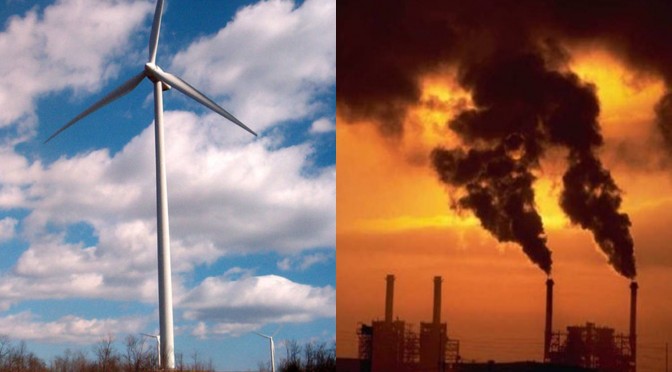The decarbonization of the electricity sector seems on track in Europe. A report presented on Wednesday suggests that the EU is disengaging from coal faster than expected while energy production with renewable technologies marks record highs.
And as a consequence of both phenomena the CO2 emissions of the European electricity sector fall at a rate never recorded so far; Last year they fell 12%. This is concluded by the study carried out by the energy experts of Agora Energiewende and Sandbag.
“The collapse of coal in 2019 exceeded all expectations,” says Dave Jones, an analyst at Sandbag and one of the authors of the study on the Twenty Eight (it still includes the United Kingdom, which left the EU on February 1). “The fall in emissions from the electricity sector was even greater than during the 2009 recession, and the fastest since at least 1990,” this specialist explains to EL PAÍS.
Specifically, the burning of coal (coal and lignite) to generate electricity in the EU was reduced by 24% in 2019 compared to the previous year. At the same time, renewables again set a historical record and generated 35% of the electricity consumed in the EU. And, for the first time, the electricity produced by wind and solar surpassed that which came from coal-fired power plants.
Renewable Implantation
Jones explains that the energy transition began more than a decade ago in most of the EU countries and that already in 2018 the generation with coal had been reduced by 30% compared to the levels of 2012. But “although the electrical transition of Europe is a marathon and not a sprint ”, the“ coal crash in 2019 exceeded all expectations ”. And in January the collapse continues, he warns.
After the fall in the use of coal in the EU, the report highlights two factors: the increase in the price of a ton of CO2 in the European emissions market (which makes coal plants unprofitable and displaced by other technologies less stations) and the implementation of renewables.
The electricity that stopped producing thermal coal in 2019 in the EU was generated almost 50% by solar and wind technologies on the one hand and by natural gas plants on the other. The plants that use gas also use a fossil fuel, but emit about half of CO2 to produce the same electricity as coal.
The decline in the use of coal will continue
The forecast of these two groups of analysts by 2020 is that the decline in the use of coal will continue. “The energy transition in Europe is taking off,” the study said, recalling that the Green Pact launched by the European Commission “has put the fight against the climate crisis at the center of all EU political work.”
In addition, the report affects, the forecast is for Europe to increase ambition for the next decade. “Emissions from the energy sector will continue to fall, even if the demand for electricity increases as transport and the heating industry continue to electrify,” experts say.
The analysis reminds that more countries can announce specific dates for the end of the use of this fuel. At this time, 15 EU countries have set closing dates for coal plants. France, for example, has established 2022. Germany, however, plans to extend the use of this fuel until 2038.
Spain, protagonist
In Spain, however, the Executive is reluctant to explain a specific closing date, despite the fact that coal is at historic lows (last year these plants barely supplied 5% of the electricity). From the energy and climate plan prepared by the Ministry for Ecological Transition for the next decade, it follows that in 2030 coal will no longer be used in the country.
Jones explains that Spain has been one of the European states that has starred in the collapse of coal in 2019 and that, in addition, it has been the country in which more solar energy was installed.
“However, Spain is the only country in Western Europe that is not yet committed to a coal removal date,” laments this specialist. It is a matter of international messages, says Jones, who believes that Spain could be free of coal “long before 2025”.


